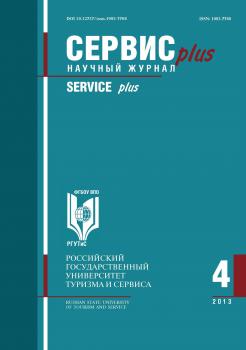Despite the fact that crisis management both in terms of the nature of knowledge required and approaches used is largely a synthesis of various disciplines, interdisciplinary aspects and the relationships do not receive sufficient attention. International literature of recent years allows a somewhat broader look at a number of both theoretical and practical aspects of crisis management in a wider context of topics and disciplines. A thorough multi-disciplinary approach to crisis management could be an important part of both the domestic research and training, and practice in the field of crisis management. This article reviews some of the most important interdisciplinary connections of crisis management with risk management, corporate governance, macroeconomic shocks, the concepts of stakeholders and corporate social responsibility, information technology, new institutional economic theory, and a number of concepts from sociology and psychology. The list of categories, models, individual concepts and theories of different subject areas which are closely interrelated with crisis management, according to international researchers, is quite long. In connection with the problems of crisis management this paper considers integrated risk management, holistic risk management, COSO-approach, moral hazard, the abuse of information asymmetry, opportunism, adverse selection, bounded rationality, the propagation model of bankruptcies depending on macroeconomic factors, the models of the influence of international integration and globalization on the dynamics of bankruptcies, epidemic models in crisis management, the sociological concept of disaster management, stakeholder theory of crisis management, the concept of reputation damage of crises, high-frequency trading in financial instruments, and the concepts of organizational learning and organizational storytelling. These and other interdisciplinary concepts serve as a book of recipes that can be applied with varying degrees of relevance to various crises in a company. It is plausible to assume that, other things being equal, crisis management, using an interdisciplinary arsenal, will be more effective and adaptive than the more limited approach based solely on the core of crisis management: economic analysis, legal regulation, management and marketing basics.
crisis management, risk-management, interdisciplinary approach
Значимость мевдисциплинарного подхода для антикризисного управления
Антикризисное управление и в русскоязычной, и зарубежной литературе является сейчас в достаточной степени устоявшейся областью экономико-управленческих знаний и практик. Но несмотря на то, что сердцевина этой дисциплины представляется всеми единообразно, на внешних ее контурах идет взаимодействие с множеством других дисциплин, необязательно экономических, управленческих и правовых, но также социологических, психологических, информационных и других. Поэтому есть все основания дискутировать относительно предметной области кризис-менеджмента в широком смысле этой дисциплины.
Действительно, с одной стороны, можно говорить об антикризисном управлении в узком смысле. Здесь антикризисное управление выступает просто как совокупность финансово-хозяйственных подходов, мер и некоторых юридически значимых стадий, которые позволяют при благоприятном исходе вывести компанию из кризисного положения, первостепенно восстановив ее платежеспособность и обеспечив надлежащую защиту интересов ее кредиторов.
Вместе с тем, с другой стороны, можно и нужно говорить об антикризисном управлении в расширительной трактовке. Это связано в первую очередь с тем, что у предприятия может быть целый спектр кризисных ситуаций и тенденций, которые далеко не в первую очередь связаны с его текущей платежеспособностью. Эти неблагоприятные тенденции могут быть связаны с влиянием широкого спектра факторов — макроэкономических, регулятивных, микроэкономических, институциональных, отраслевых, организационных, технико-технологических, информационных,
1. Aabo Т., Hansen M.A., and С. Pantzalis (2012) Corporate foreign exchange speculation and integrated risk management//Managerial Finance, Vol. 38, Issue8,pp.729- 751.
2. Aebi, V. (2012) Rise management, corporate governance, and bank performance in the financial crisis // Journal of Banking and Finance, Vol. 36, Issue 12, p. 3213.
3. Alpaslan СМ., Green S.E., and I.I. Mitroff (2009) Corporate Governance in the Context of Crises: Towards a Stakeholder Theory of Crisis Management // Journal of Contingencies and Crisis Management, Vol. 17, Issue 1, pp. 38-49.
4. Arya, P.B. (2012) Integrated Risk Management Practices // International Journal of Knowledge and Research in Management and E-Commerce, Volume 2, Issue 2, pp. 8-12.
5. Brown J., DenningS., etal(2005) Sto rytellingin organizations: Why storytelling is transforming the 21st century organization and management. Oxford, UK: Elsevier.
6. Coombs, W. T. (2007) Protecting organization reputation during a crisis: The development and application of situational crisis communication theory // Corporate Reputation Review, Vol. 10, Issue 3, pp. 163-176.
7. Davis, D. (2005) Crisis management: Combating the denial syndrome //Computer Law and Security Report, Vol. 21, Issue 1, pp. 68-73
8. DeverellE. andE.-K. Olsson (2010) Organizational culture effects on strategy and adaptability in crisis management// Risk Management, Vol. 12, Issue 2, pp. 116-134.
9. Dillon R.I. and CH. Tinsley (2008) How near-misses influence decision making under risk: A missed opportunity for learning // Management Science, Vol. 54, Issue 8, pp. 1425-1440.
10. Dreman, D. (2012) High Frequency Follies // Forbes, January 16, P. 63.
11. Fachlenbrach R. and R.M. Sluk(2Qll) Bank CEO incentives and the credit crisis//Journal of Financial Economics, Vol. 99, Issue 1, pp. 11-26.
12. Farmer, R.E.A. (1985) Implicit Contracts with Asymmetric Information and Bankruptcy: The Effect of Interest Rates on Layoffs // The Review of Economic Studies, Vol. 52, No. 3, pp. 427-442.
13. Fassin Y. andD. Gosselin (2011) The Collapse of a European Bank in the Financial Crisis: An Analysis from Stakeholder and Ethical Perspective // Journal of Business Ethics, Vol. 102, Issue 2, pp. 169-191.
14. Gilpin D.R. and P.J. Murphy (2008) Crisis Management in a Complex World. New York: Oxford University Press. 210 pp.
15. Guo J., Wu X., and N. Li (2007) The Dynamic Analysis of the Development of Enterprise Crisis Management // Science Research Management, Vol. 28, Issue 1, pp. 89-96.
16. Guo L, Wu X., and Y. Yang (2009) Study on Mechanism of Enterprise Group´s Crisis Management Based on the Epidemic Contagion Dynamic Model // Third International Conference on Genetic and Evolutionary Computing, pp. 717-720.
17. Harada N. and N. Kageyama (2011) Bankruptcy dynamics in Japan // Japan and the World Economy, Vol. 23, pp. 119-128.
18. Heller V.I. and J.R. Darling (2011) Toyota in crisis: denial and mismanagement // Journal of Business Strategy, Vol. 32, Issue 5, pp. 4-13.
19. Humphery-Jenner, M. (2012) The Governance and Performance of Chinese Companies Listed Abroad: An Analysis of China´s Merits Review Approach to Overseas Listings // Journal of Corporate Law Studies, Vol. 12, Number 2, October, pp. 333-365.
20. Jaques, T. (2007) Issue management and crisis management: An integrated, non-linear, relational construct // Public Relations Review, Vol. 33, Issue 2, pp. 147-157.
21. Jaques, T. (2010) Reshaping crisis management: the challenge for organizational design // Organizational Development Journal, Vol. 28, Issue 1, pp. 9-17.
22. Kopp D. M, Nikolovska I, Desiderio K.P., and J.T. Guterman (2011) "Relaaax, I Remember the Recession in the Early 1980s...": Organizational Storytelling as a Crisis Management Tool // Human Resource Development Quarterly, Vol. 22, No. 3, pp. 373-385.
23. linsley P.M. and R.E. Slack (2012) Crisis Management and an Ethic of Care: The Case of Northern Rock Bank // Journal of Business Ethics, April 2012.
24. Macey J. R. (2008) Corporate governance: promises kept, promises broken. Princeton University Press.
25. Miller K.D. and H.G. Waller (2003) Scenarios, Real Options and Integrated Risk Management // Long Range Planning, Vol. 36, No. 1, pp. 93-107.
26. Mio С and M. Fasan (2012) Does Corporate Social Performance Yield Any Tangible Financial Benefit During a Crisis? An Event Study of Lehman Brothers // Corporate Reputation Review, Vol. 15, Issue 4, pp. 263-284.
27. Muammer, Zerenler; Atil Bilge F; Derya Ozihan (2007): The Impact of Using Information Technologies on Crisis Management Success in Small and Medium Sized Enterprises, The Business Review, Cambridge; volume: 8.
28. Muelbroek, L.K. (2005) A Senior Manager´s Guide to Integrated Risk Management // Journal of Applied Corporate Finance, Vol. 14, Issue 4, pp. 56-70.
29. Pang, A. (2012) Towards a crisis preemptive image management model // Corporate Communications: An International Journal, Vol. 17, Issue 3, pp. 358-378.
30. Pargendler, M. (2012) The Unintended Consequences of State Ownership: The Brazilian Experience // Theoretical Inquiries in Law, Vol. 13, Issue 1, P. 503.
31. Pearson CM. (2010) Dawn R. Gilpin and Priscffla J. Murphy: Crisis Management in a Complex World//Administrative Science Quarterly, Vol. 55, Issue 1, pp. 170-171.
32. PirsonM. and S. Turnbull (2011) Corporate Governance, Risk Management, and the Financial Crisis: An information Processing View // Corporate Governance: An International Review, Vol. 19, Issue 5, pp. 459-470.
33. Philippe, C. (2010) Handbook of Risk Management: Implementing a Post Crisis Corporate Culture. Wiley: Hoboken, NJ, USA. P. 288.
34. Qijun J. andZ. Cong (2008) An Empirical Study on the Crisis Management about Food Enterprises Based on Corporate Social Responsibility.
35. Rotheli, T.F. (2010) Causes of the financial crisis: Risk misperception, policy mistakes, and banks´ bounded rationality //The journal of socio-economics, Vol. 39, Issue 2, pp. 119-126.
36. Schenker-Wicki A., Inauen M., andM. Olivares (2010) Unmastered risks: From crisis to catastrophe: An economic and management insight // Journal of Business Research, 04/2010, Vol. 63, Issue 4, pp. 337-346.
37. Scholes, M.S. (2000) Crisis and Risk Management//The American Economic Review, Vol. 90, No. 2, Papers and Proceedings of the One Plundered Twelfth Annual Meeting of the American Economic Association (May 2000), pp. 17-21.
38. Stanton, Т.Н. (2011) Governance implications of the global financial crisis: United States experience // Public Organization Review, Vol. 11, Issue 1.
39. Taleb, N.N. (2007) The Black Swan: The Impact of the Highly Improbable. London: Penguin Books.
40. Thynne, I. (2011) Symposium Introduction: The Global Financial Crisis, Governance and Institutional Dynamics // Public Organization Review, Vol. 11, Issue 1, pp. 1-12.
41. Vatsa, K.S. (2004) Risk, vulnerability, and asset-based approach to disaster risk-management // International Journal of Sociology and Social Policy, Vol. 24, Issue 10/11, p. 1-48.
42. Veil, S.R. (2011) Mindful learning in crisis management // Journal of Business Communication, Vol. 48, No. 2, pp. 116-147.
43. Walton,E. (2011) The Effective Chair-CEO Relationship //The Corporate Board, May/June, pp. 15-22.
44. Wang, Z. (2012) Corporate Governance Under State Control: The Chinese Experience // Theoretical Inquiries in Law, Vol. 13, Issue 1, pp. 487-502.
45. Ward, S. (2003) Approaches to Integrated Risk Management: A Multi-Dimensional Framework // Risk Management, Vol. 5, No. 4, pp. 7-23.
46. Weber, B. (2011) High Frequency Trading: The growing threat of rogue trading // Business Strategy Review, Vol. 22, Issue 2, pp. 50-53.
47. Ye, G. (2010) High Frequency Trading Models + Website: Technology, Algorithms, Implementation. Wiley: Hoboken, NJ, USA, P. 338.
48. Zambon, E. el al (2007) A Model Supporting Business Continuity Auditing & Planning in Information Systems, Second International Conference on Internet Monitoring and Protection (ICIMP 2007) IEEE Computer Society.
49. Zinkin, J. (2010) Challenges in implementing corporate governance: whose business it anyway? John Wiley and Sons (Asia), Singapore.
50. Alonso-Almeida M.M. and Bremser K. (2013) Strategic responses of the Spanish hospitality sector to the financial crisis // International Journal of Hospitality Management, Vol. 32, March 2013, pp. 141-148.
51. Elliott D. et al (2005) Crisis management and services marketing//Journal of Services Marketing, Vol. 19, Issue 5, pp. 336-345.
52. Baxter R. et al (2013) Enterprise Risk Management Program Quality: Determinants, Value Relevance, and the Financial Crisis // Contemporary Accounting Research, 16 APR
53. Mattoo A. and I. Borchert (2010) The Crisis Resilience of Services Trade // The Service Industries Journal, Volume 30, Issue 13/14, pp. 2115-2136.

















